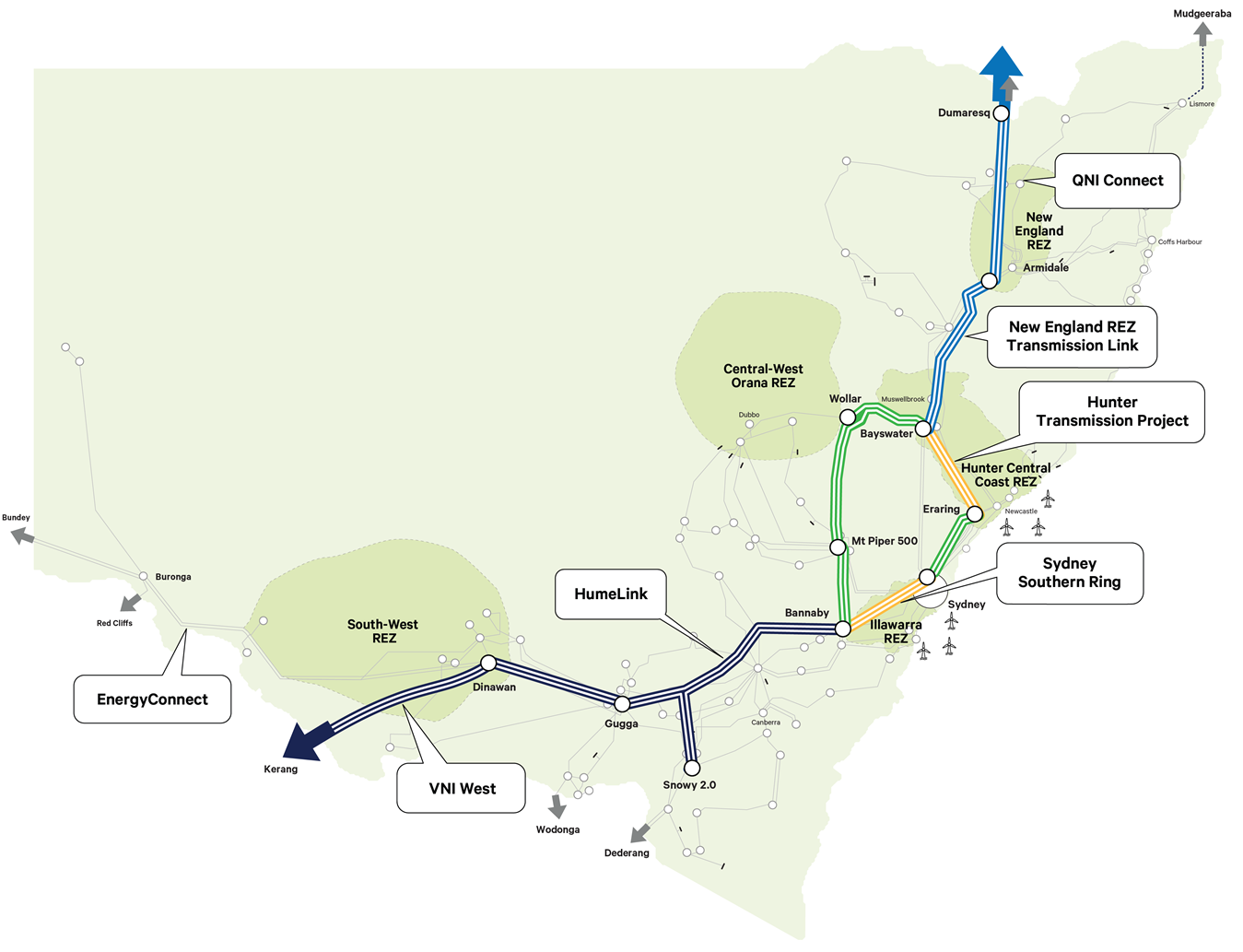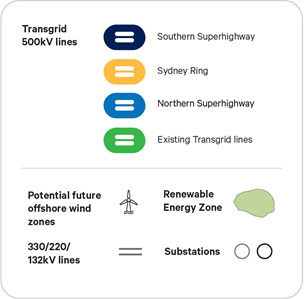Electricity comes on at the flick of a switch to enable our modern lives. This energy comes into your home from generation, through transmission and distribution.
27 June 2023
Where does electricity come from?
In order to understand how electricity gets to you, we need to first take a look at how electricity is generated.
Electricity can be generated from various energy sources. There are two major categories of energy: renewable and non-renewable.
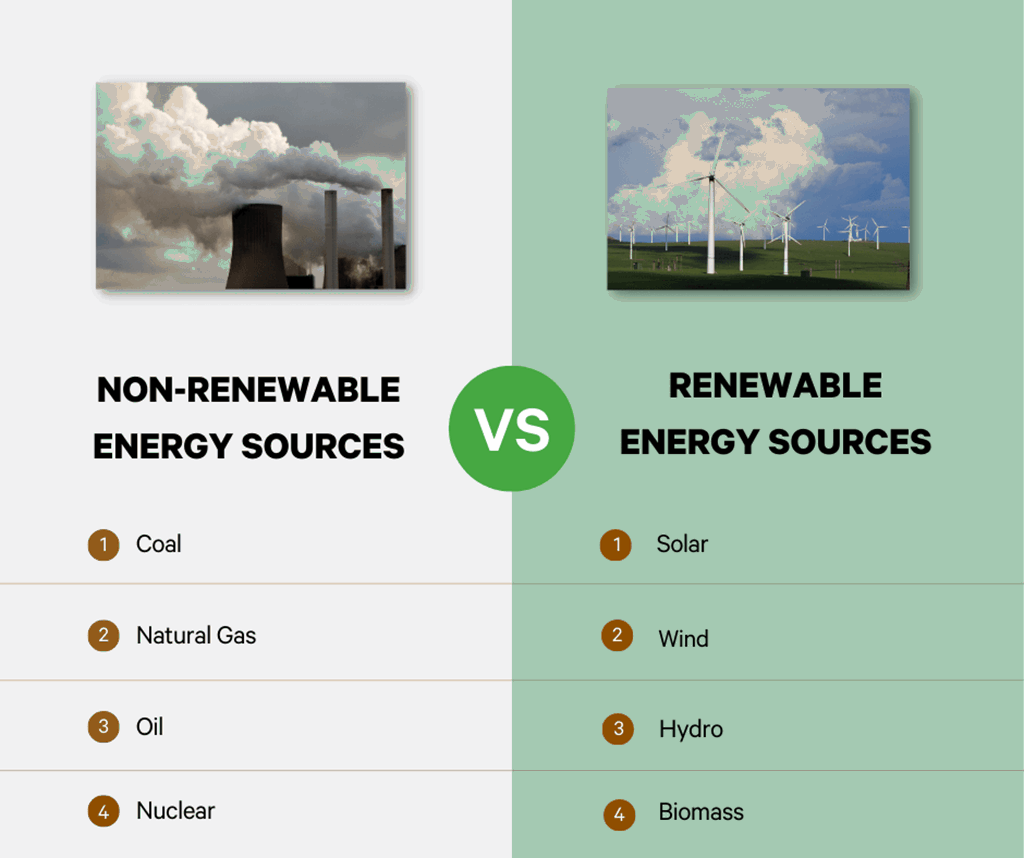
Non-renewable energy sources
In Australia and many other countries, most energy sources are non-renewable. Non-renewable energy resources are available in limited supplies that cannot be replaced. Historically, Australia’s dominant source of energy comes from burning fossil fuels, such as coal and gas. This creates steam and drives turbines at a power station, generating electricity for the power grid. As of 2021, about 70% of Australia’s energy use still relied on non-renewable sources of energy such as coal and gas.
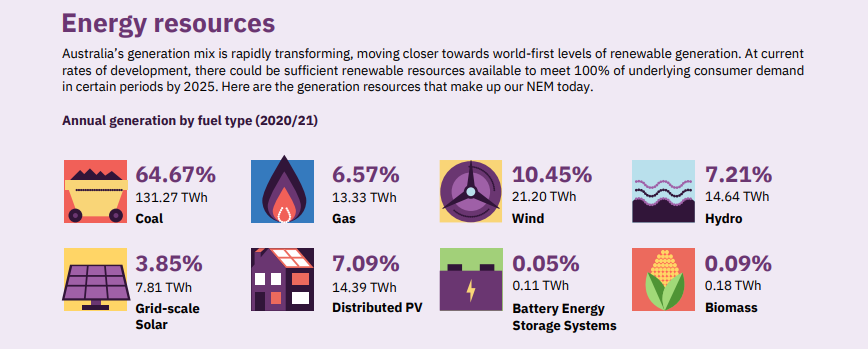
Renewable energy sources
Renewable energy on the other hand, is produced using natural resources such as wind, solar, geothermal, and bioenergy that are constantly replaced and abundantly available.
By transitioning away from fossil fuels and towards renewable energy sources, we can significantly reduce greenhouse gas emissions, mitigate the impact of climate change and help us achieve our net zero emission target.
Crucial components of electricity transmission – substations and transmission lines
When you flick on your power switch to turn on the lights, boil your kettle, or power up your air conditioning, the electricity comes on instantly. Electricity reaches your home through a safe and reliable real-time process from generation to transmission and then distribution to your street.
It starts with power plants, which convert various forms of energy such as fossil fuels or renewable sources into electrical energy. The high voltage electricity is then carried by transmission lines over long distances before it reaches a substation, where the voltage is lowered so it can be sent on smaller power lines before it reaches the distribution networks and then finally distributed via the local poles and wires to homes and businesses.
Substations are the connection points for the high voltage transmission and distribution network. They allow the energy to be collected from various generation locations, and then convert this from high transmission voltage to distribution voltage, and transport that energy to end users on the distribution network.
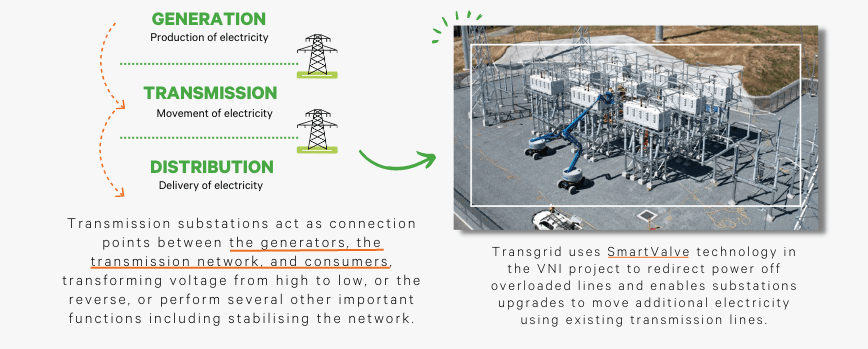
Transmission lines are equally important in delivering electricity because they are essential foronnecting renewable energy generation to the power grid. Australia is rapidly transitioning to a clean energy future, but the energy market transformation cannot happen without a significant increase in renewable projects and infrastructure upgrades, and in order to tap into the new renewable energy sources - often located far from cities and towns - new transmission lines need to be built so that we can connect large-scale renewable energy projects to the grid, from where it is generated to where it is needed most. The transmission line network we have today was constructed over many decades to meet the locations of the present generators, and transport that energy to cities and towns.
In fact, the Australian Energy Market Operator (AEMO) recommends the urgent installation of more than 10,000km of new transmission lines to connect new generation projects in regional areas. They have identified an optimal development path to build new transmission urgently, so Australia can meet its energy needs and unlock $29 billion in net market benefits.
How Transgrid is leading the energy transition
Australia is dramatically shifting its energy mix and we are on the frontline of making the rapid and profound changes required to make this happen through the development of nation-critical transmission projects to connect clean, renewable energy to millions of Australians.
We already operate and maintain the nation’s most important transmission network that forms the backbone of the National Electricity Market. We provide a secure and reliable power supply to more than 4 million homes and businesses. In New South Wales and the ACT, we’re working to enable Renewable Energy Zones (REZs), the renewable power stations of the future.
These modern-day power stations will boost competition for wholesale energy and drive lower prices for consumers, also creating thousands of new clean energy jobs in regional areas, whilst reducing Australia’s reliance on fossil fuels.
Along with completing three significant transmission projects in 2022 on time and on-budget, we are currently developing three new transmission projects of even greater critical significance:
- HumeLink – increasing the transfer capacity between southern NSW and the major load centres of Sydney, Newcastle and Wollongong
- Victoria NSW Interconnect – expanding interconnector capacity between Victoria and NSW
- EnergyConnect – 900km of transmission infrastructure connecting power grids across three states
All three projects are critical to energy security and need to be delivered earlier than is currently planned. This work will not only enable low-cost renewables to enter the market and fill the gap left as coal generators are retired, but also deliver both environmental benefits and savings to energy users.
We are currently in the process of constructing all three projects in one single program so that they can be delivered faster and cheaper for consumers. We continue to work closely with our customers, communities and landowners to build a power system to serve our future generations.
At Transgrid, we’re making Australia’s clean energy future possible.

